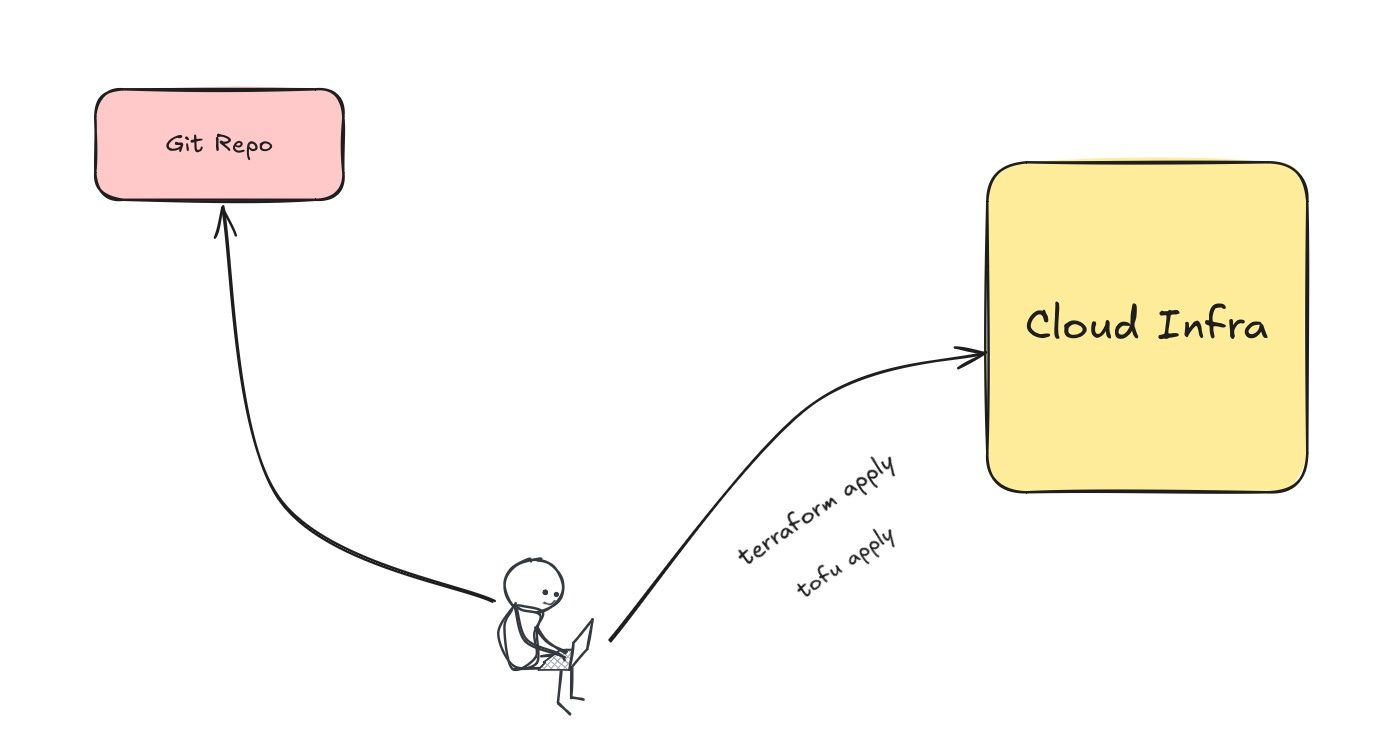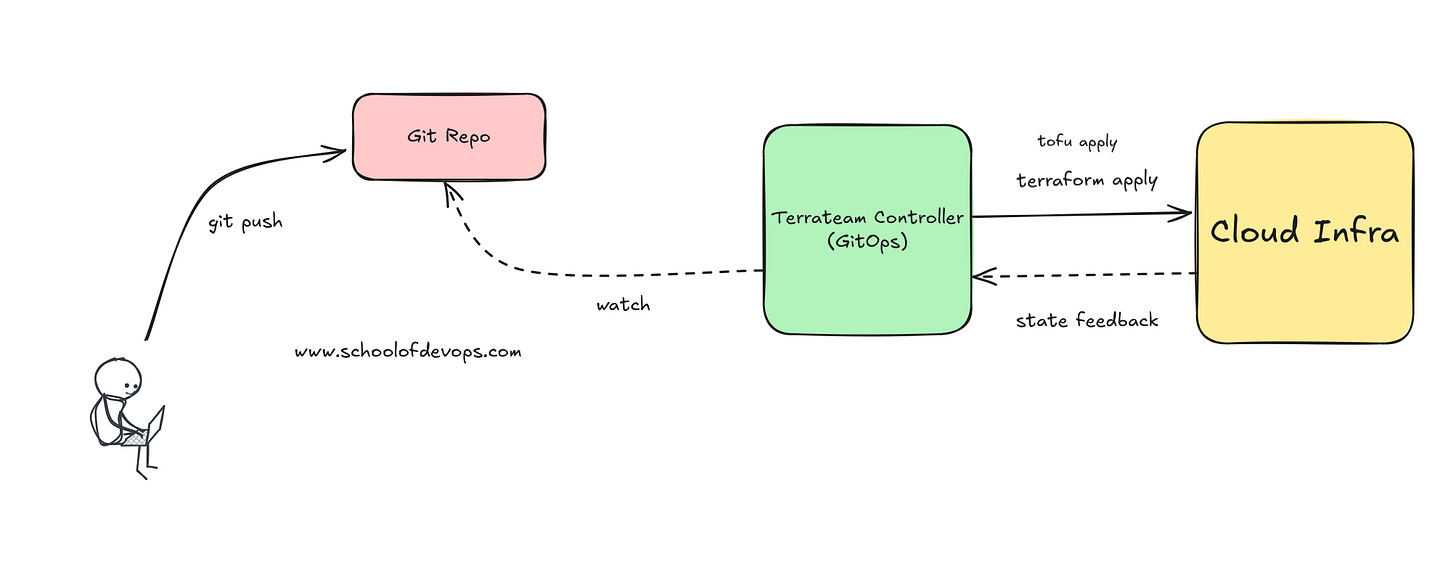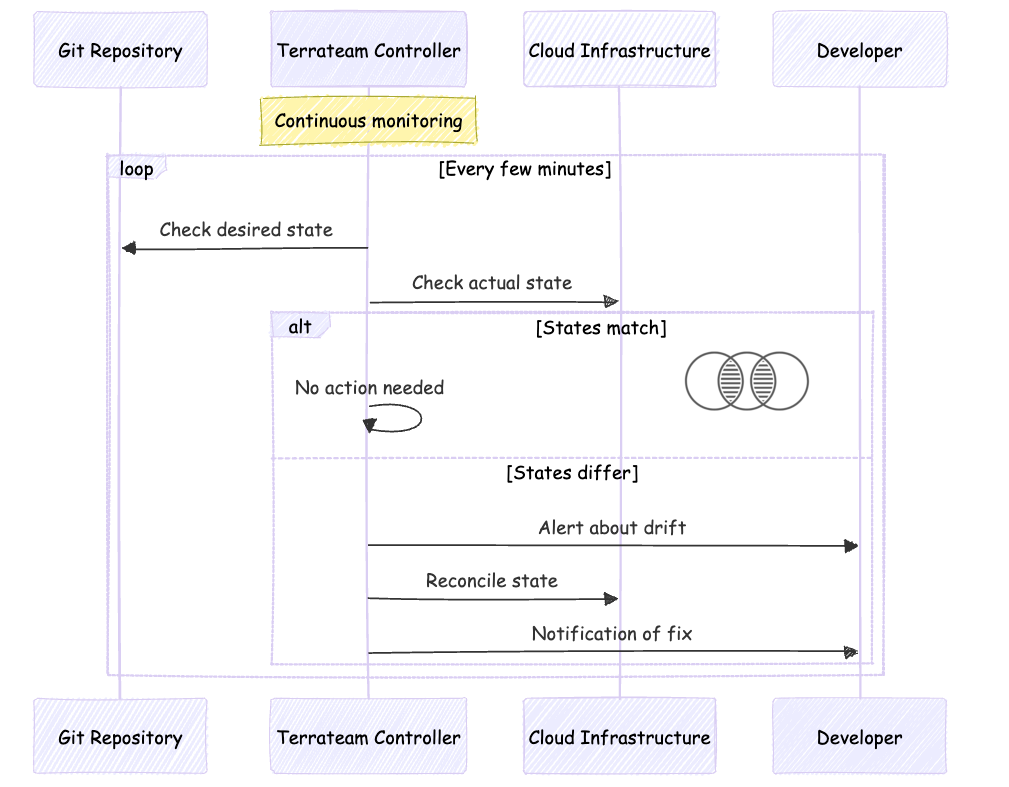GitOps beyond Kubernetes: How Terrateam Brings IaC into the Future
The principles that revolutionized Kubernetes deployments are now transforming how we manage cloud infrastructure
Remember the first time you discovered version control? That magical moment when you realized you'd never again lose code changes or wonder which teammate modified that critical function? GitOps is having a similar revolutionary impact on infrastructure management, and while it's commonly associated with Kubernetes deployments, its principles are universal. Enter Terrateam: a tool that's bringing the GitOps philosophy to the world of Terraform and OpenTofu.
The Key Idea: Your Infrastructure's Single Source of Truth Should Be Git
Imagine you're a detective trying to solve a crime. You wouldn't want multiple versions of the evidence scattered across different locations – you need one authoritative source of truth. That's exactly what GitOps brings to infrastructure management. Instead of infrastructure changes happening through manual CLI commands or cloud console clicks, every change is declared in Git and automatically synchronized with your cloud environment.
Let's visualize how this differs from traditional Terraform workflows:
Traditional Terraform workflows often involve engineers running terraform apply from their local machines or CI/CD pipelines, creating a disconnect between what's in version control and what's actually running in production. It's like having a recipe book (your Git repo) but allowing chefs to improvise in the kitchen (your cloud environment) without updating the recipes. Terrateam bridges this gap by ensuring your infrastructure strictly follows the "recipe" in Git.
Breaking It Down
1. Automated Reconciliation
Just as ArgoCD continuously monitors your Kubernetes manifests and ensures the cluster state matches them, Terrateam watches your Terraform configurations and automatically applies changes when discrepancies are detected. No more "drift" between your intended and actual infrastructure.
Here's how the drift detection process works:
2. Pull-Based Architecture
Instead of pushing changes from CI/CD pipelines, Terrateam follows the GitOps principle of pull-based deployments. Your infrastructure controller constantly compares the desired state in Git with the actual state in your cloud environment. This approach provides better security (no need for cloud credentials in CI/CD) and reliability (retries on failures, continuous reconciliation).
3. Declarative Everything
Remember the old days of writing shell scripts to provision infrastructure? Those imperative approaches were like giving step-by-step directions to a destination. Terrateam, following GitOps principles, embraces the declarative approach – you specify the destination (desired state), and it figures out how to get there.
4. Enhanced Collaboration
Just as Git revolutionized code collaboration, Terrateam brings similar benefits to infrastructure management through a streamlined pull request workflow:
The workflow includes:
Pull requests for infrastructure changes
Built-in review workflows
Automatic cost estimation on PRs
Policy enforcement before changes are applied
Key Takeaways for DevOps Practitioners
Git as the Single Source of Truth: Stop treating your Terraform state as the source of truth. Your Git repository should be the ultimate authority on your infrastructure configuration. Terrateam ensures this by automatically synchronizing your cloud environment with your Git repository.
Automated Drift Detection: No more surprises during your next terraform plan. Terrateam continuously monitors your infrastructure and alerts you when manual changes create drift from your declared configuration. It's like having a security system for your infrastructure.
Enhanced Security: By following GitOps principles, Terrateam eliminates the need for developers to have direct cloud access or manage sensitive credentials. All changes flow through Git, providing a clear audit trail and reducing security risks.
Better Developer Experience: Remember how Git simplified code collaboration? Terrateam does the same for infrastructure changes. Developers can propose changes through familiar Git workflows, get automated feedback through PR comments, and trust that approved changes will be applied consistently.
Looking Ahead
As infrastructure becomes increasingly complex, the principles of GitOps become more crucial. Terrateam represents a significant step forward in applying these principles to infrastructure as code. Just as we wouldn't dream of managing application code without version control today, soon we'll look back and wonder how we ever managed infrastructure without GitOps.
Whether you're managing a small cloud environment or orchestrating infrastructure across multiple providers, bringing GitOps principles to your infrastructure as code practices can significantly improve reliability, security, and collaboration. Terrateam makes this transition seamless, allowing teams to focus on building and scaling their infrastructure rather than managing deployment processes.
The next time someone tells you GitOps is just for Kubernetes, remember: the principles of having a single source of truth, automated reconciliation, and declarative configuration are universal. Tools like Terrateam are proving that GitOps can revolutionize all aspects of infrastructure management, one pull request at a time.







